Velar vs Binance vs Coinbase: Best Crypto App for Trading in 2025?
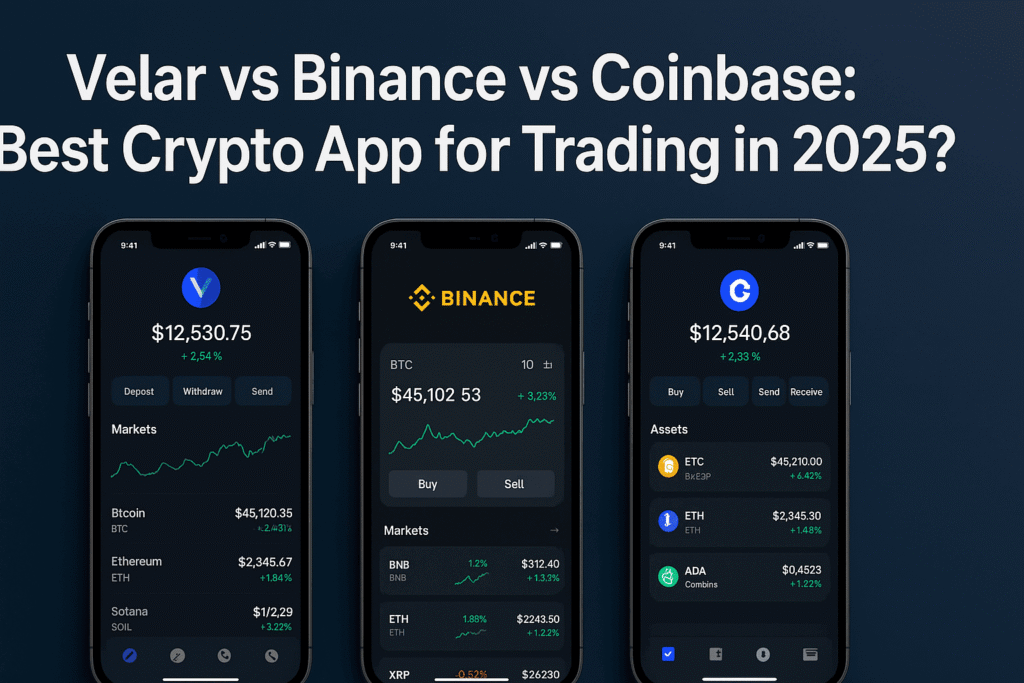
Introduction – Velar vs Binance vs Coinbase
Let’s be real—choosing the best crypto trading app in 2025 is like walking into a massive tech store without a shopping list. Everything’s shiny. Everything promises “easy profits” and “the future of finance.” But which one actually fits your style?
If you’re stuck between Velar, Binance, and Coinbase, you’re not alone. These three apps each cater to a different kind of crypto trader—from the DeFi diehard to the security-first newbie.
So in this guide, we’re going deep. I’m breaking down the experience, tools, fees, staking options, mobile apps, and much more. By the end, you’ll know exactly which one deserves a spot on your home screen.
Quick Overview of the Contenders
Velar: The DeFi Newcomer Everyone’s Watching
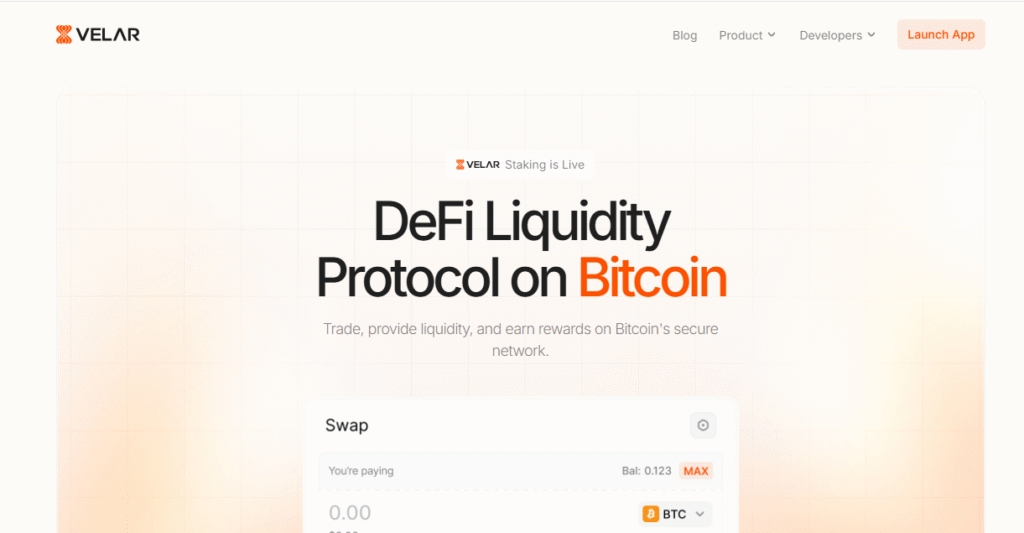
Velar is like that indie artist making waves while the big labels aren’t looking. Built for DeFi and powered by Bitcoin layers like Stacks, Velar lets you trade and stake straight from your wallet—no KYC, no middlemen.
It’s all about privacy, decentralization, and modular staking. If you’re into restaking or playing with emerging DeFi layers, Velar might be your jam.
Official Website – Velar
Binance: The Jack-of-All-Trades Giant
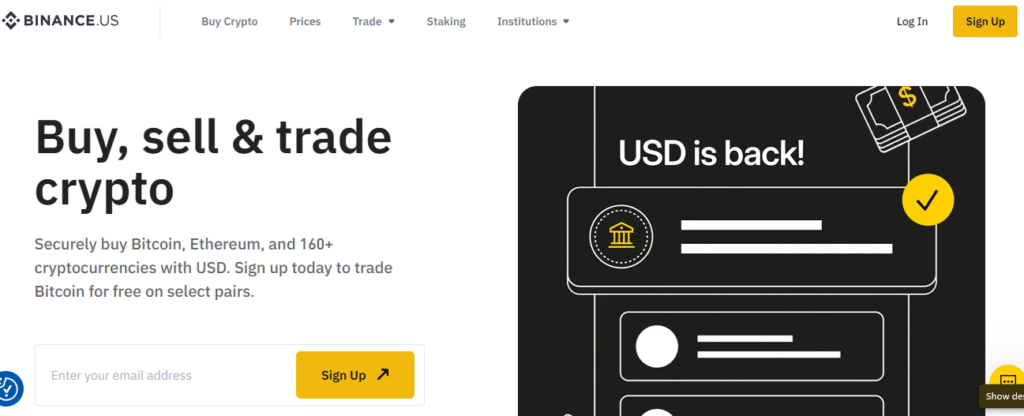
Love it or hate it, Binance is still the juggernaut. It’s got literally everything: spot trading, futures, margin, staking, launchpads, token launches, and even crypto cards. It’s a full-blown crypto ecosystem.
But be warned—regulatory issues mean not every feature is available everywhere, especially in the U.S.
Official Website – Binance
Coinbase: The Clean, Compliant Choice
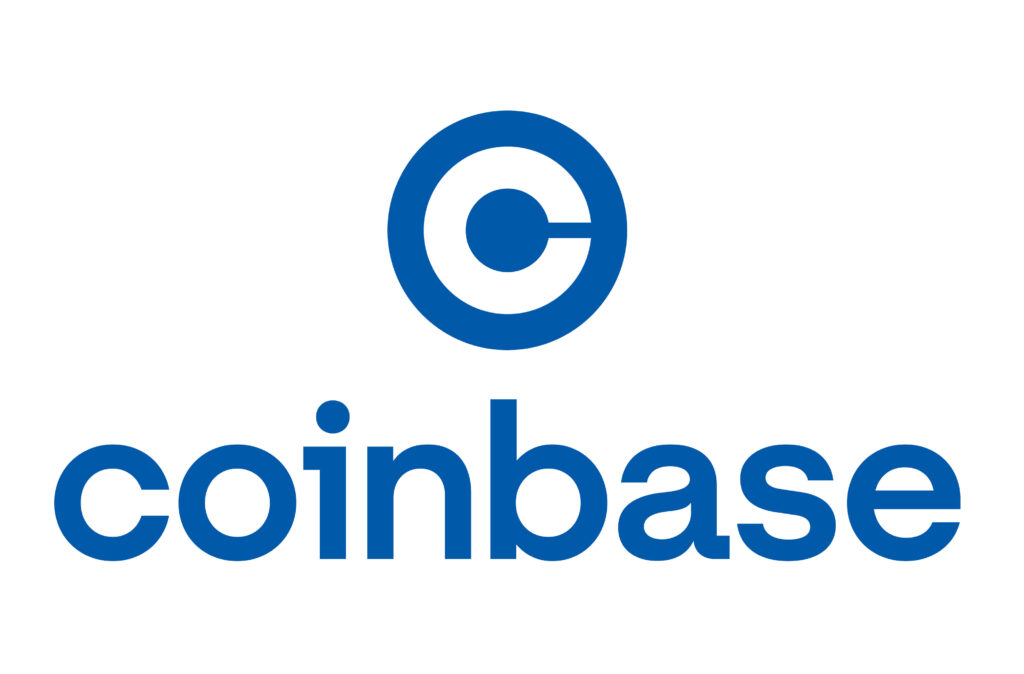
If Binance is a bustling city, Coinbase is a modern museum. Clean, structured, and made for folks who want security and ease of use. It’s the go-to for U.S. users who care about regulation, insurance, and straightforward crypto buys.
Coinbase has also dipped into DeFi lately with its Base Layer 2 and advanced trading dashboard.
Official Website – Coinbase
User Interface & Experience

Velar – Built for the Web3 Crowd
Velar feels like the future. It’s sleek, minimal, and entirely DeFi-native. No fluff—just connect your wallet, swap, stake, restake. Boom.
If you’ve used MetaMask or Uniswap, you’ll feel right at home.
Binance – Powerful but… Busy
Let’s be honest: Binance is a beast. There’s a lot going on, and if you’re new, it can feel like opening Photoshop for the first time.
That said, it’s got Lite Mode—a simplified version for those who don’t need all the bells and whistles.
Coinbase – Clean, Calm, and Collected
Coinbase nails simplicity. It’s smooth, intuitive, and doesn’t make you feel dumb for asking, “Wait, what’s a limit order?” Perfect for beginners or anyone who likes things tidy.
👉 Phoenix Wallet vs Coinbase vs Kraken: Best App for Fees, Features & Safety Revealed!
Supported Assets

Who Offers What?
- Velar: A curated list of DeFi tokens and Bitcoin-native assets. Quality > quantity.
- Binance: The full buffet—350+ coins, including the wild stuff like meme tokens and launchpad projects.
- Coinbase: About 150 tokens. It sticks to what’s compliant and safe.
Looking for DeFi Gems?
Velar leads in this category thanks to its Bitcoin-DeFi integrations. Binance has the widest range overall. Coinbase, meanwhile, plays it very safe.
Trading Features & Tools

Spot, Margin, Derivatives—Who Does What?
- Velar: Mostly spot trades through a DEX-style interface. Derivatives might come via partner protocols later.
- Binance: It’s a full-fledged trading war room—spot, margin, futures, and more.
- Coinbase: Spot trading only, but their Advanced Trade feature adds more serious tools.
Staking, Lending & Restaking
Velar brings restaking to the table—reusing your staked tokens across protocols. It’s wild, experimental, and very DeFi.
Binance offers both flexible and locked staking with high APYs on trending tokens.
Coinbase? You can stake major coins like ETH and SOL, but rewards are on the conservative side.
Smart Tools and AI Insights
Binance gives you AI bots and advanced portfolio analysis. Velar is still developing wallet-based insights and scoring systems. Coinbase is behind here—it focuses more on simplicity than smart features.
Security & Trust

Are They Playing by the Rules?
- Velar: 100% decentralized. No KYC. You hold your keys.
- Binance: Tricky. It complies based on your country, which means limited features in some places.
- Coinbase: The poster child for regulation. SEC-compliant and publicly traded.
Wallets and Custody
Velar lets you bring your own wallet—think MetaMask or Ledger.
Binance and Coinbase provide in-app custodial wallets, but also support their own non-custodial apps: Trust Wallet and Coinbase Wallet, respectively.
What Happens if Something Goes Wrong?
- Velar: You’re on your own. That’s the DeFi trade-off.
- Binance: Has the SAFU fund—basically a rainy-day fund for users.
- Coinbase: FDIC-like insurance on USD balances, and solid cold storage.
Fees & Pricing Structure

Who’s Taking What Cut?
- Velar: 0.3% per transaction—classic DEX model.
- Binance: 0.1% standard; discounts if you use BNB.
- Coinbase: Up to 1.49% for buys. Lower on Advanced Trade, but spreads apply.
Deposits & Withdrawals
Velar doesn’t charge anything extra beyond gas fees. Binance is generally cheap but depends on the coin. Coinbase? Higher fees, especially with card payments.
Any Sneaky Costs?
Velar is transparent—it’s all on-chain. Binance may hide costs in conversions. Coinbase often includes a spread (hidden fee) in the quote you see.
Staking & Passive Income

Velar’s DeFi-First Approach
Velar lets you tap into emerging DeFi pools across Bitcoin layers. You’re early here—which means higher risk but potentially higher rewards.
Binance’s Buffet of Staking Options
Staking is Binance’s playground. You’ll find everything from 7-day flexible to 120-day locked options with juicy APYs.
Coinbase’s Safe and Steady Rewards
Coinbase keeps it simple: on-chain ETH, SOL, ADA staking with consistent payouts. You won’t get rich overnight, but it’s stable.
Mobile App Performance
Smooth or Sluggish?
- Velar: Lightweight, fast, and mobile-optimized.
- Binance: A bit heavy on older phones, but super functional.
- Coinbase: Clean and responsive with minimal bugs.
What Do Users Say?
- Velar: 4.6★ — praised for simplicity and speed.
- Binance: 4.3★ — power users love it; newbies not so much.
- Coinbase: 4.5★ — great for beginners.
Community & Ecosystem
Who’s Building What?
Velar is gaining traction with Bitcoin-DeFi developers. Binance already has an empire with BNB Chain. Coinbase’s Base L2 is growing but still early.
Where Can You Ask Questions?
- Velar: Telegram, Discord, GitHub.
- Binance: Reddit, Telegram, massive global support.
- Coinbase: Help docs, Reddit, email support.
Geographic Access
Where Can You Actually Use Them?
- Velar: Global—no KYC limits unless your country blocks dApps.
- Binance: Feature availability depends on your location.
- Coinbase: Available in 100+ countries, especially strong in the U.S.
Can You Use a VPN?
You can use VPNs with Binance, but that’s risky. Velar doesn’t care. Coinbase tracks geo-compliance strictly.
Unique Selling Points
Velar’s Edge
- No KYC
- Self-custody staking
- Modular restaking options
Binance’s Toolkit
- Every trading feature imaginable
- Massive liquidity
- Token launchpad and earn programs
Coinbase’s Superpower
- Fully regulated and trusted
- Great fiat ramps
- Best for U.S.-based users
Downsides & Risks
Velar’s DeFi Risks
- No customer support
- Smart contract risk
- You’re your own bank—for better or worse
Binance’s Regulatory Problems
- Still under scrutiny in some countries
- Features may disappear without warning
Coinbase’s High Fees
- Great UX, but you pay for it
- Spreads and transaction costs add up
Final Verdict: Which One Should You Use in 2025?
- Velar if you love freedom, privacy, and experimenting with the latest in DeFi.
- Binance if you want all the tools, trade aggressively, and don’t mind navigating a complex interface.
- Coinbase if you’re in the U.S., want security, and just need a reliable way to buy, hold, and stake.
Conclusion
In the end, there’s no one-size-fits-all crypto app. Each platform has strengths and blind spots. What matters most is what you want from crypto.
Looking for DeFi and self-custody? Go with Velar. Want a full trading suite? Binance is calling. Need regulation and simplicity? Coinbase is your buddy.
Try them out. See what feels right. Crypto’s still about exploration—and these three platforms are great places to start.
FAQs
1. Is Velar good for beginners?
It depends—if you’re familiar with wallets like MetaMask, you’ll love it. If not, there’s a learning curve.
2. Why does Coinbase feel more expensive?
Because it often includes spreads in its pricing, and the convenience comes with a markup.
3. Can I use Binance from the U.S.?
Yes, but you’ll be using Binance.US, which has fewer features.
4. Does Velar support staking ETH?
Not directly. It supports Bitcoin-layer protocols and modular restaking, but ETH might need a bridge.
5. Which platform is safest?
Coinbase has the most robust safety net. Velar is safest if you know how to protect your keys. Binance sits in between.
Please don’t forget to leave a review.
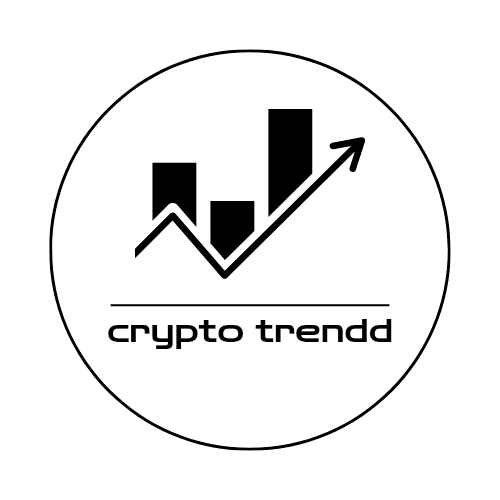
One Comment